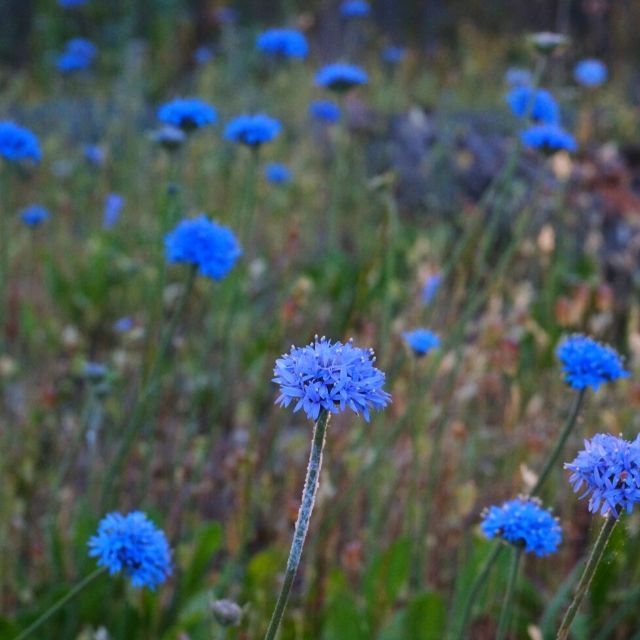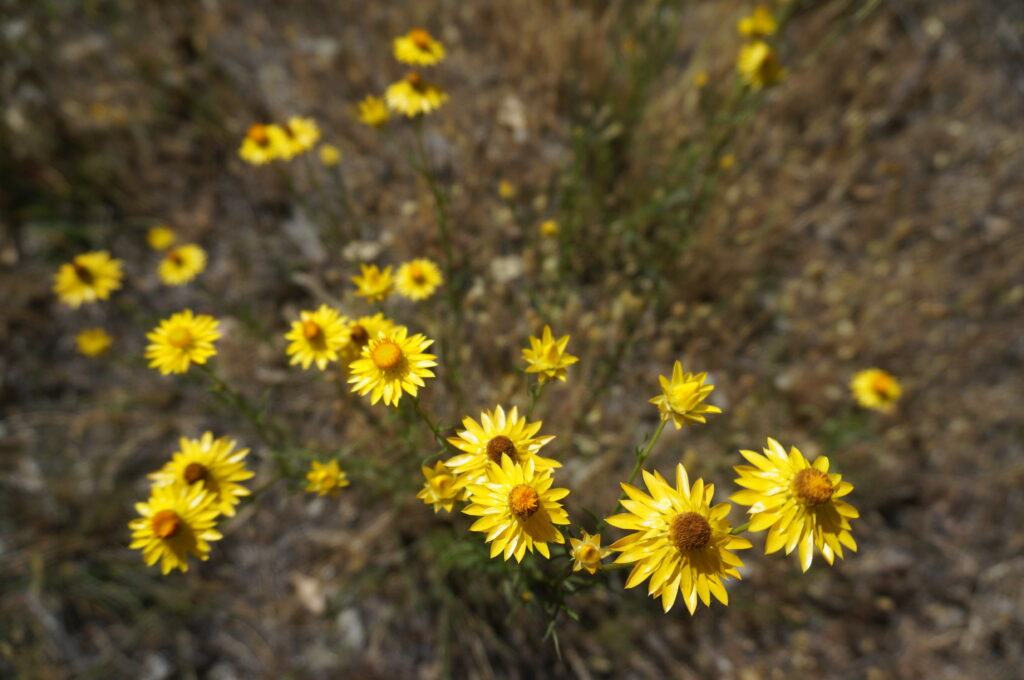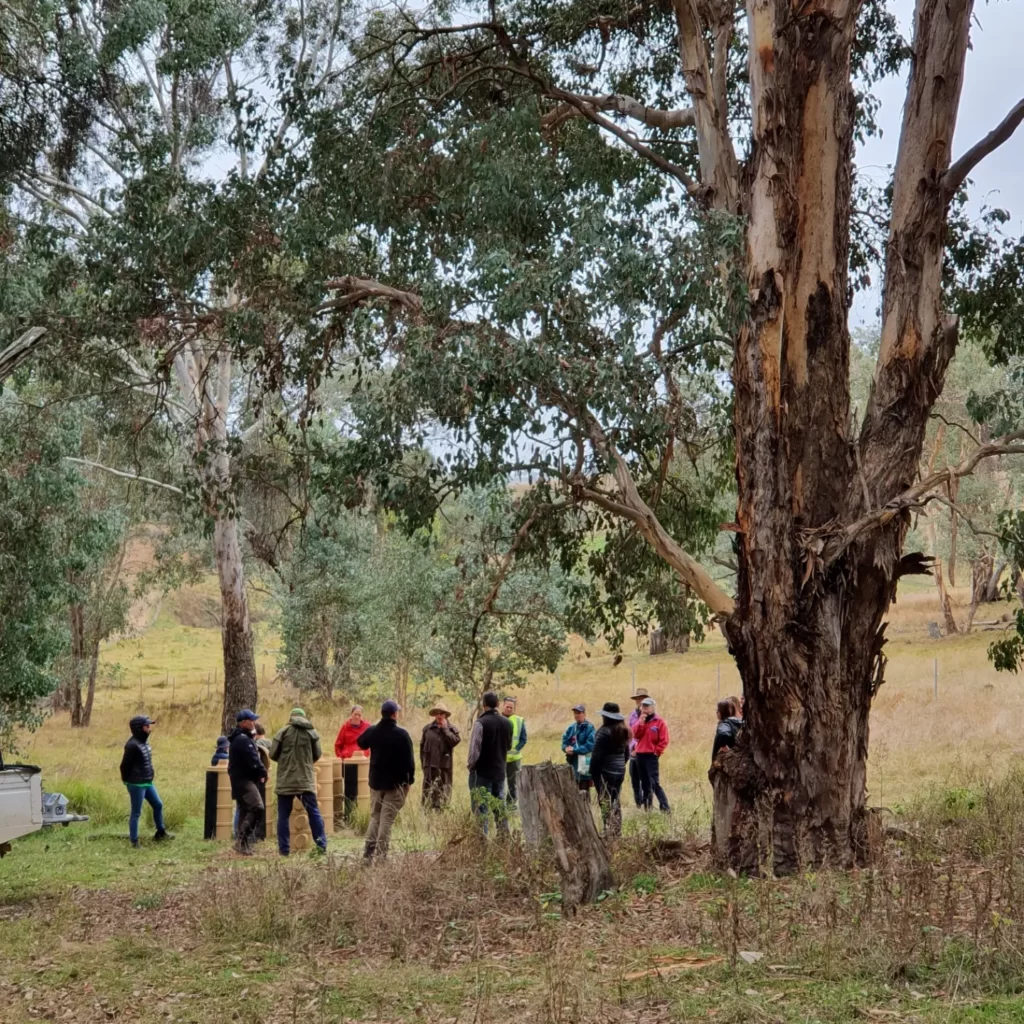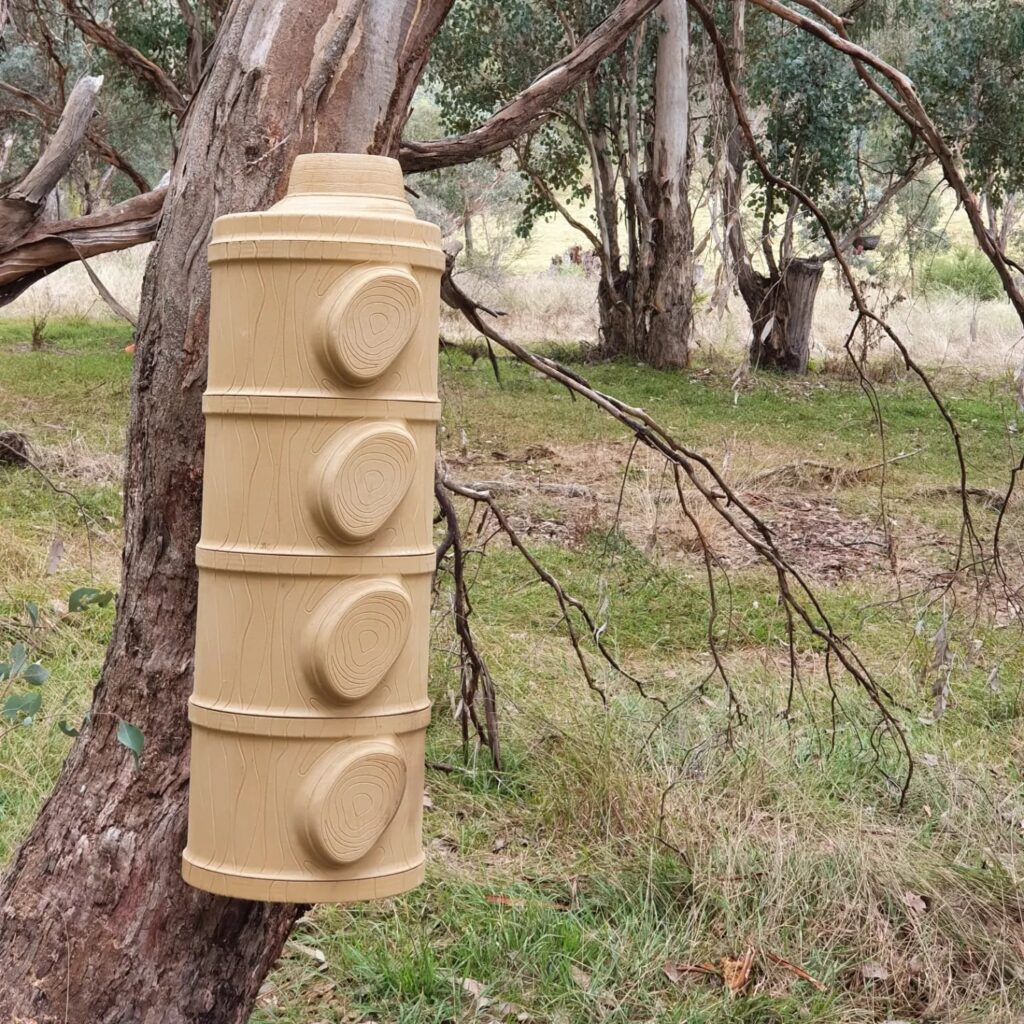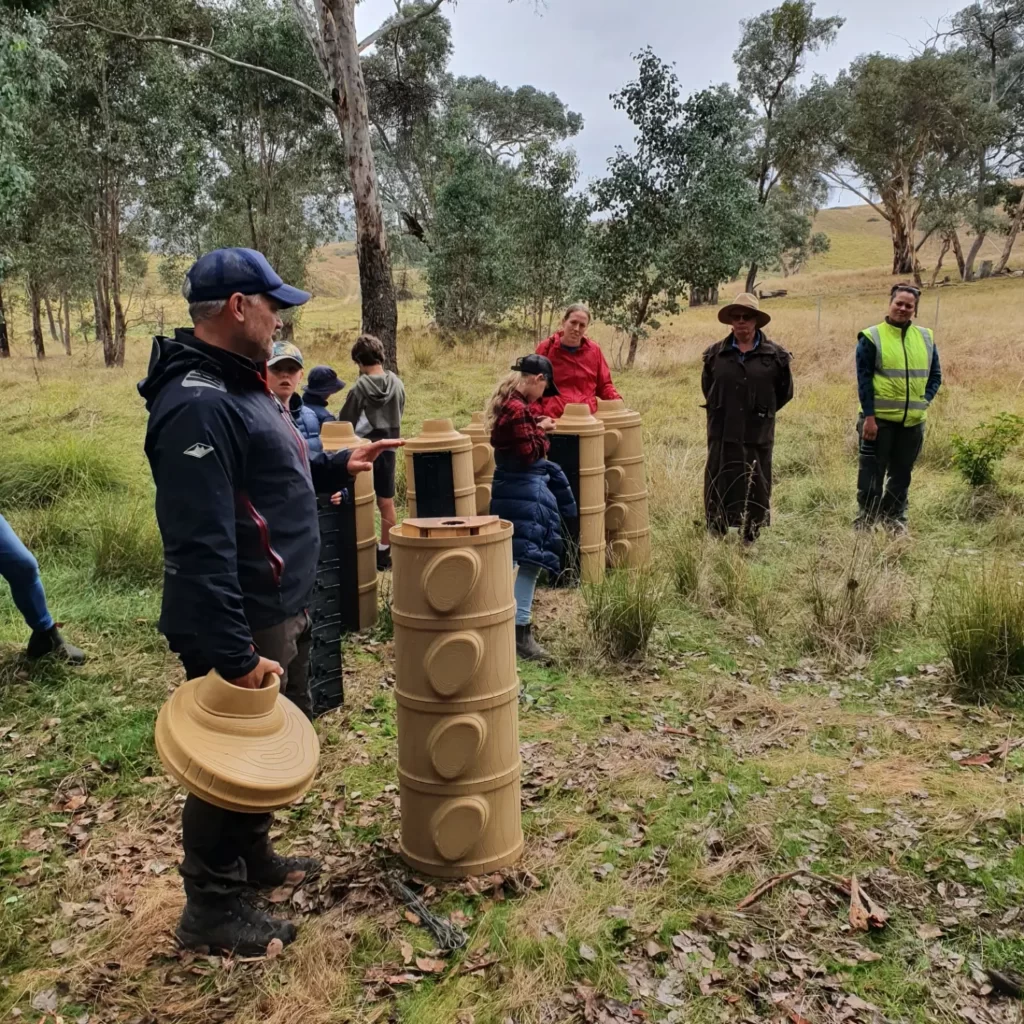Meet Louise and David – landholders managing a precious place
Although we live in tumultuous times, those at the frontline of saving our native species continue to quietly get on with the job.
Farmers Louise Freckelton and her partner David Bray are some of those who are actively protecting threatened plants and animals.
On their farm, Highfield Farm and Woodland, at Mt Adrah, 170 km west of Canberra, a conservation covenant permanently protects two-thirds of the 330-ha farm. The remaining one-third produces award winning lamb, beef and chicken alongside eco-tourism accommodation.
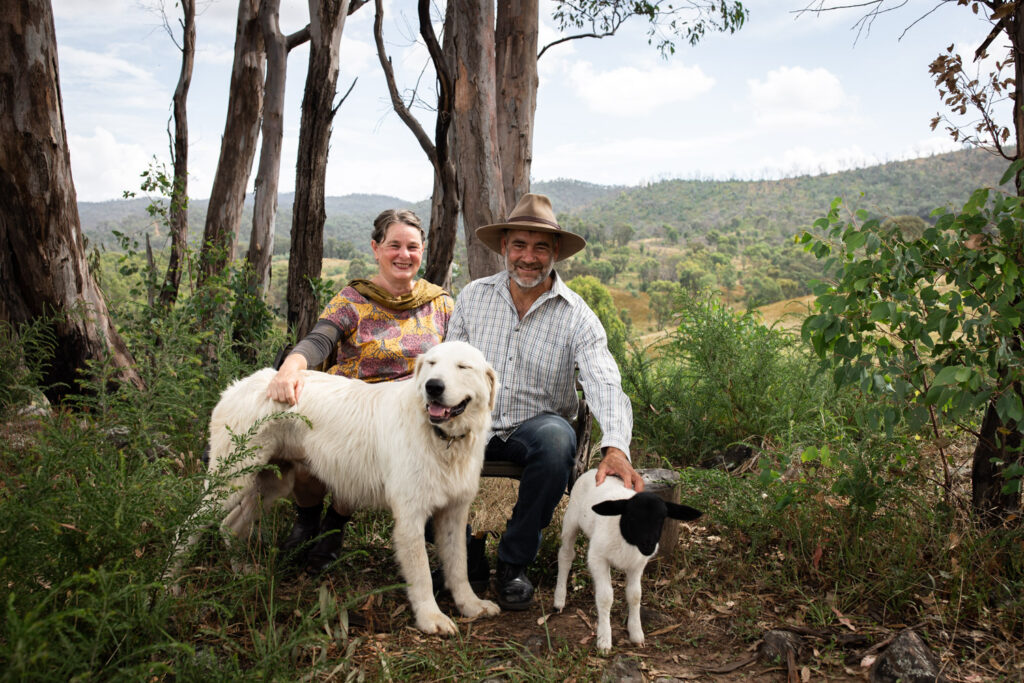
For Louise and David, farming and conservation go hand in hand.
“For us, we can’t imagine farming without conservation,” Louise said.
While the focus of the conservation covenant is on protecting the Box Gum Grassy Woodland – one of Australia’s rarest habitats – multiple other species benefit.
“The conservation efforts don’t stop at the boundary of the conservation and farming land. We treat the whole place really.
“We are doing all sorts of projects, mostly with Landcare, to reintroduce paddock trees, fence off dams, protect waterways and revegetate old sheep camps,” Louise said.
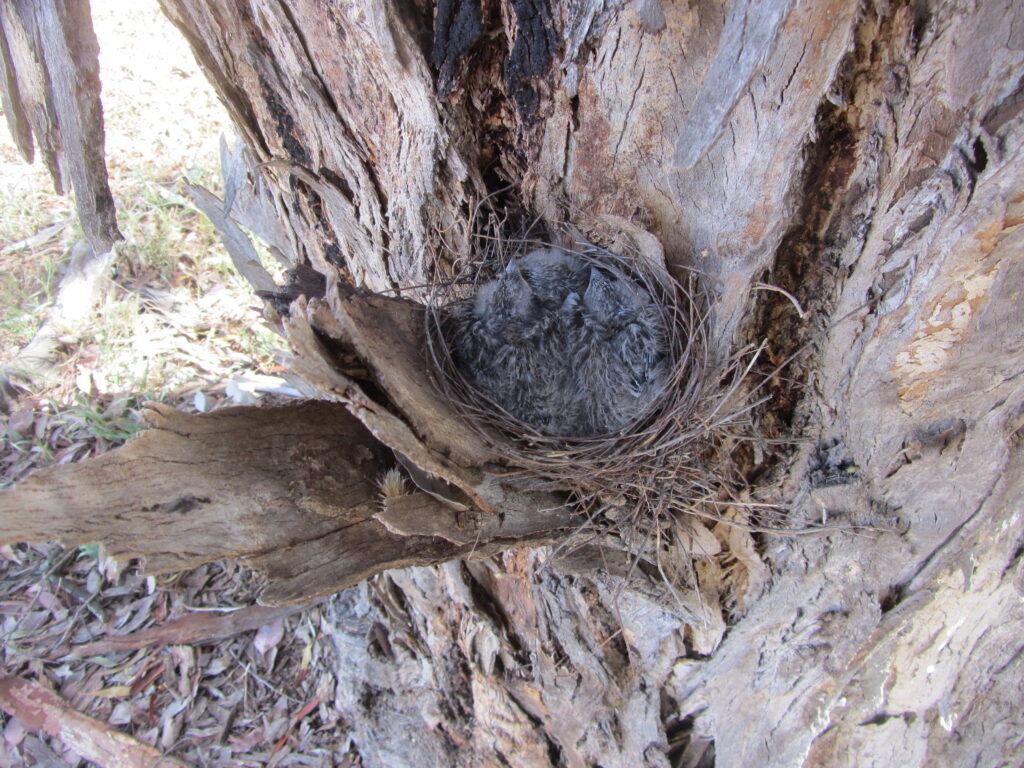
Since moving to Highfield in late-2012, Louise has seen extensive recovery of native wildflowers as well as re-establishment of wattles, kurrajongs and yellow box eucalypts.
Louise believes that the improved biodiversity is linked to the overall health of the farm.
“We have 140 different bird species here and they help control insects. The trees provide shade and shelter onto our paddocks.
“So it’s a whole range of benefits that we see,” Louise said.
A project with Murrumbidgee Landcare is revegetating a part of Highfield’s conservation area that was not burnt during the 2019/2020 bushfires. The small parcel of unburnt remnant was spared the devastation that occurred across much of the farm and elsewhere. The project includes improving habitat for the Turquoise Parrot by installing nest boxes, as well as tree planting and pest control.
Once prevalent across eastern Australia from Mackay to Melbourne, the Turquoise Parrot is now listed as vulnerable in NSW.
A recent community workshop at Highfield brought together local landholders, bird lovers, school children and ecologists to see the work underway for the Turquoise Parrot.
The story of the nesting box project was recently aired on ABC TV and online.
At Highfield Louise will continue to focus her attention on the Turquoise Parrot, the Box Gum Grassy Woodland and all the native species on her farm.
“I now have 330 ha where I can have an impact on the world.
“If you can see revegetation happening, or if you can see more water birds visiting your dams, or more birds nesting in your paddocks, or whatever the measure is, it gives a great deal of work satisfaction and pleasure,” Louise said.
Read more stories of landholders actively managing land for nature.
